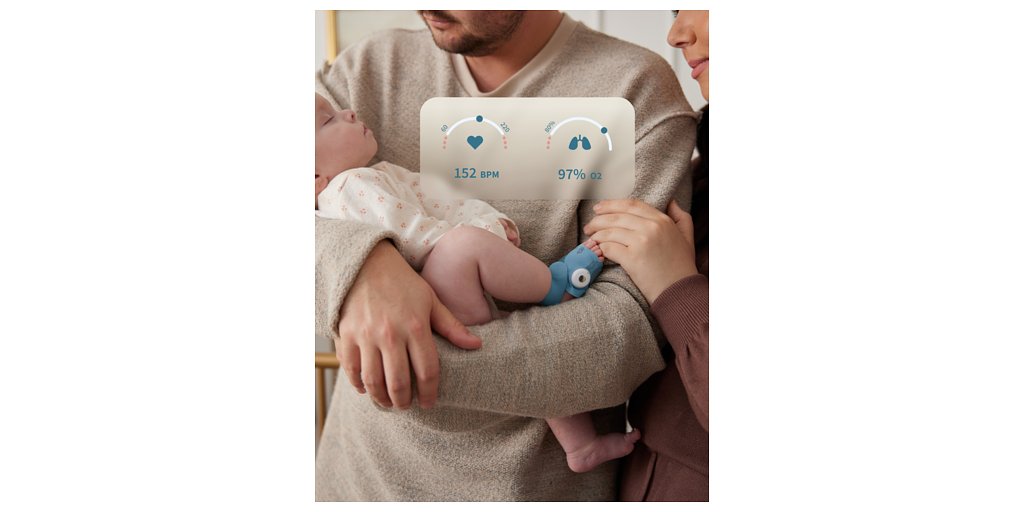
Bridging the Gap: Remote Monitoring Transforms Post-Hospital Infant Care
A new partnership aims to extend critical care beyond the hospital walls, leveraging FDA-cleared technology to improve outcomes for vulnerable infants and ease the burden on healthcare systems.
Bridging the Gap: Remote Monitoring Transforms Post-Hospital Infant Care
NEW YORK, NY – November 19, 2025
The Rise of Connected Infant Care
The landscape of post-hospital infant care is undergoing a significant transformation, driven by advancements in remote patient monitoring (RPM) and a growing need for connected care solutions. Owlet, Inc. (NYSE: OWLT) and Locus Health have joined forces to address this evolving need, integrating data from Owlet’s FDA-cleared BabySat infant monitoring device directly into Locus Health’s RPM platform. This collaboration is not simply about technology; it’s about extending the reach of care, improving outcomes, and reducing the anxieties faced by parents and healthcare providers alike.
Approximately 500,000 babies transition home from intensive care units (ICUs) annually in the U.S., often requiring continued monitoring for conditions such as congenital heart defects, chronic lung disease, and arrhythmia. Traditionally, this has meant frequent readmissions or prolonged hospital stays. Now, with increasingly sophisticated RPM technologies, the possibility of providing comprehensive care from the comfort of home is becoming a reality. “The goal is to create a seamless transition from hospital to home,” explains one industry analyst. “It's about proactively managing potential issues before they escalate and providing parents with the peace of mind that their infant is being continuously monitored.”
BabySat and Locus Health: A Synergistic Partnership
Owlet’s BabySat is central to this new approach. Unlike many consumer-grade baby monitors, BabySat received FDA clearance as a prescription-only device, signifying a higher level of clinical validation and accuracy. The device uses a comfortable, wire-free sock to continuously monitor a baby’s pulse rate and oxygen saturation, transmitting vital signs in real-time to the Locus Health platform. This integration is crucial because it allows clinicians to access the data directly within their existing workflows, eliminating manual data entry and reducing the risk of errors.
Locus Health, a leader in RPM solutions for complex pediatric cases, provides the infrastructure and expertise to interpret this data and intervene when necessary. Their platform supports a wide range of care pathways, enabling clinicians to personalize monitoring plans and tailor interventions to individual patient needs. The platform integrates with existing electronic health record (EHR) systems, meaning vital signs are instantly available to doctors and nurses. “This isn’t about replacing clinical judgment; it’s about augmenting it with real-time data,” says a hospital administrator involved in the pilot program. “It allows us to identify potential problems early and intervene before they become serious.”
Expanding Beyond Direct-to-Consumer: A Strategic Shift for Owlet
The partnership with Locus Health represents a significant strategic shift for Owlet. While the company initially gained prominence with its direct-to-consumer Smart Sock, this collaboration signals a move toward enterprise partnerships and a greater emphasis on clinical validation. By integrating with a leading RPM platform, Owlet is positioning itself as a key player in the medical device market and diversifying its revenue streams.
This shift isn't without its challenges, but it reflects a broader trend in the healthcare industry. Consumers are increasingly demanding more convenient and connected care options, and healthcare providers are seeking solutions that can improve outcomes and reduce costs. The combination of Owlet’s monitoring technology and Locus Health’s RPM platform is well-positioned to capitalize on this trend. “We’re seeing a convergence of consumer technology and clinical medicine,” says one industry observer. “Companies that can bridge that gap will be the winners in the long run.” The company is also investing in expanding its clinical validation with data from leading Children’s Hospitals like Boston Children’s and St. Louis Children’s.
A Growing Market: The Future of Pediatric RPM
The pediatric RPM market is experiencing substantial growth, driven by technological advancements, increasing demand for accessible healthcare, and a growing prevalence of chronic conditions. Analysts predict that the global pediatric telehealth market will reach nearly $300 billion by 2033, with RPM playing a key role in this expansion. This growth is fueled by a number of factors, including the increasing number of babies born prematurely, the rising cost of healthcare, and the demand for more convenient and personalized care options.
While the potential benefits of pediatric RPM are clear, there are also challenges to overcome. Ensuring data privacy and security, addressing alert fatigue, and integrating RPM data into existing clinical workflows are all critical considerations. However, with the right technology, infrastructure, and clinical expertise, these challenges can be overcome, paving the way for a future where every infant has access to the care they need, when they need it. Several hospitals are already planning expanded pilot programs to measure the impact of the new integration on readmission rates and overall patient satisfaction. The success of initiatives like this will be pivotal in the broader adoption of connected infant care.
📝 This article is still being updated
Are you a relevant expert who could contribute your opinion or insights to this article? We'd love to hear from you. We will give you full credit for your contribution.
Contribute Your Expertise →